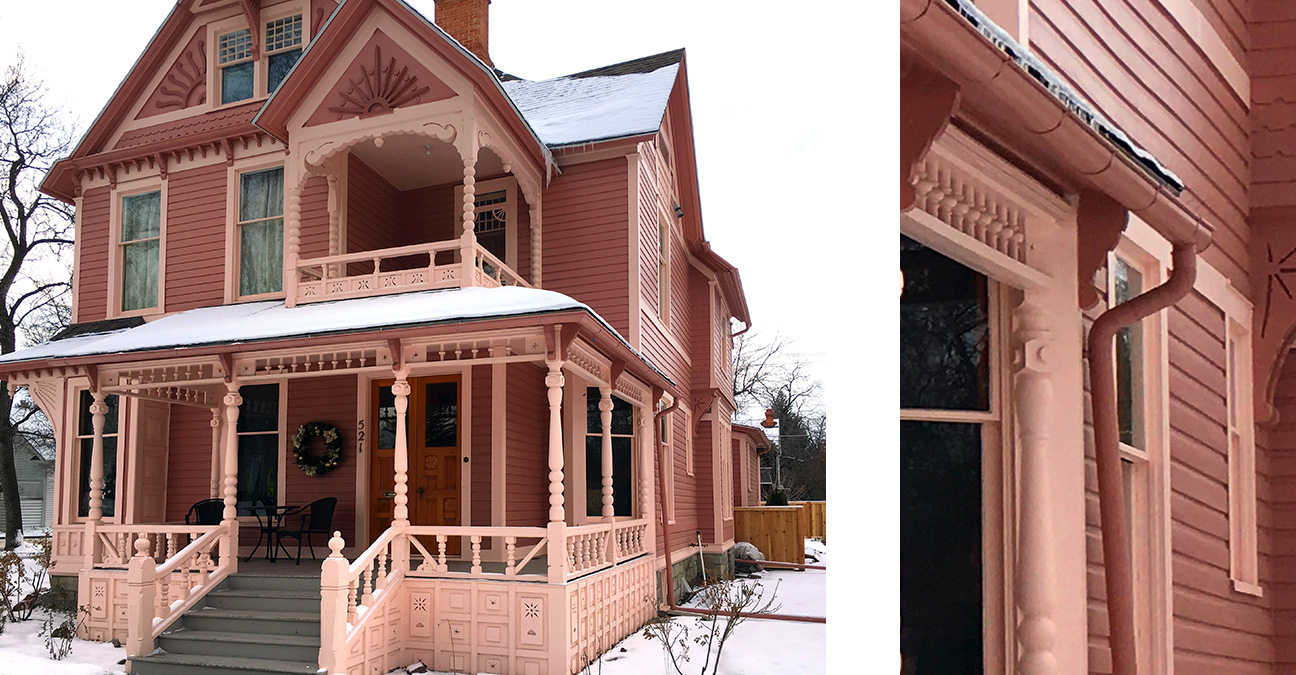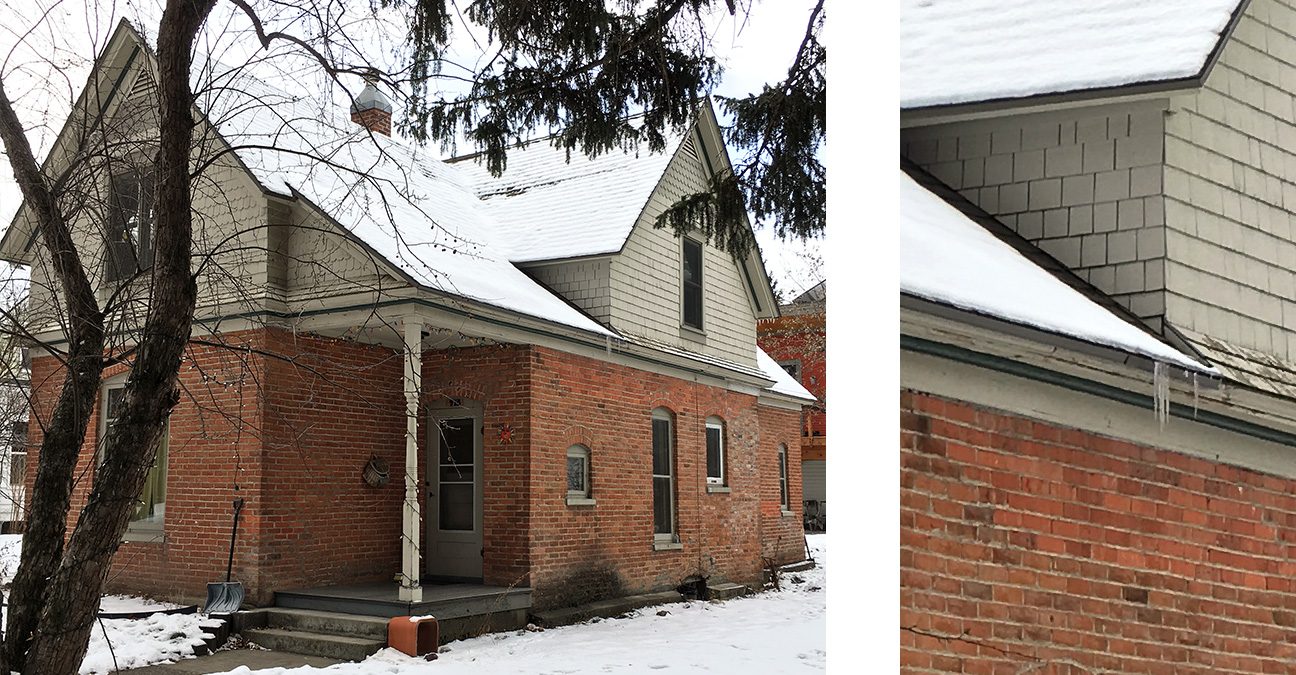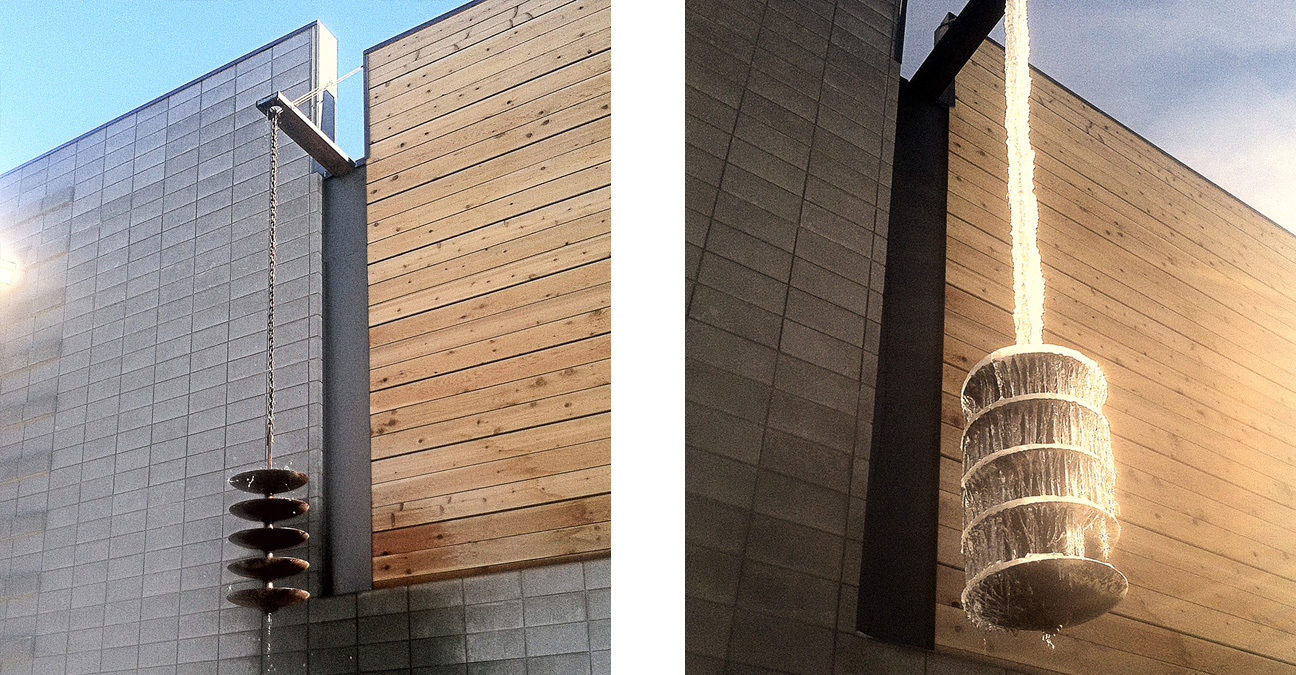It’s that time of year again. OK. It’s past that time of year. But if you haven’t cleaned out your gutters yet, then this will be a subtle reminder.
Gutter. Just saying the word, sounds like you have a dilapidated speech pattern. Or suitable for the yokel phrase, “I’s gots to get me some of dem gutters.” That is why I prefer the Canadian term: Eavestrough.
Unfortunately, Canadian Eavestroughs only sound better in name, but are equivalent in appearance.
The Sheet Metal and Air Conditioning Contractors’ National Association, or SMACNA, may have a short-sided acronymn|1| but they were extensive in their recommended eavestrough shape profiles.
The following are 12 recommended eavestrough profiles from SMACNA. This ample listing appears thorough, and should be able to match the exact feel of your house – but every profile is nearly identical.

If you have a modern house with clean lines, then a box-style gutter similar to Style A, Style B, or Style E might be suitable – but these styles still contain an unnecessarily large drip-edge. If a slightly fluted eavestrough would accentuate your home then Style C might be complementary, but every “ogee” style eavestrough shown is too eccentric – especially Style K.
However, SMACNA may have been too extensive with their list. Because EVERY house in America contains K Style aluminum gutters – with the awful 90 degree corrugated elbows connected to the ribbed downspouts.
K-Style is supposed to mimic crown moulding, but if you don’t have crown moulding on the interior of your home, then it will not be suitable re-cast in white aluminum faceted on top of 50% of your fascia trim.
1% of highly-eccentric homeowners with Queen Anne Victorian houses might prefer the crown moulding inspired K-Style Eavestroughs, but K-Style Gutters strewn across America’s generic suburbs is similar to Queen Elizabeth II hiring Elton John to be her eccentric personal designer.
Therefore, I went on an expedition to analyze which Eavestroughs were installed on local turn-of-the-century Queen Anne houses in the Bozeman area. These houses have eccentric embellishments from fanciful wood-turned columns, to fish-scale shingles. However, the Eavestroughs were either half-round gutters with round downspouts or completely devoid of gutters entirely.|2|

Half-round pink gutters with round downspout.

Half-round copper gutters with round downspouts.

No Gutters.
If Queen Anne houses don’t contain crown-moulding inspired K-Style Gutters, then it’s definitely too elaborate affixed to single-story townhouses in homogeneous subdivisions.
World War II brought many advances in technology, including lightweight durable aluminum products. Aluminum gutters became much more economical than steel, but aluminum has also cheapened the aesthetics of the American architectural landscape. I could not find a single house on the local historical registry that contains K-Style gutters, and thus I wonder if any current home with aluminum ribbed downspouts can be beloved enough in 80 years to share our same preservation sentiments.
I cannot pronounce gutter in Japanese, 樋, but the Japanese have been creating exceptional architecture for millennium by incorporating thoughtful rain-directing systems. Rain has nourishing and natural cleansing properties that are highly valued in Japanese customs. Rain is often collected by the Japanese for household uses, but it is also embraced and accentuated through rain chains.
Instead of rain being expeditiously directed to the nearest storm drain through a series of dented aluminum boxes, rain chains provide a whimsical appreciation of nature.
Current American architecture is an endless expanse of engineering features devoid of whimsy. That is why I am an admirer of my firm’s new architecture office. The butterfly roof directs all water toward a central cantilevered scupper.
However, this scupper is an industrial downspout befitting within the local context of grain silos and railroad tracks. The scupper culminates in a simple chain that directs water to five discarded discs from an agricultural implement.

The water pools and splashes, pools and splashes, pools and splashes, on each subsequent disc – culminating on a designed landscape garden below. In the winter this kinetic sculpture becomes a statically frozen marvel – albeit weighing 42,000 tons.
Our engineering-touted society simply deals with problems, like directing water away from our foundations, without embracing the solutions. Where did the gargoyles go? The two-headed lion scuppers. The dragon’s head dispensing water. Where is the whimsy and deference to nature.
So I thank you Rutland Gutter Supply for this gem:

Footnotes:
Click the purple numerals to transport between hyperlinks
1 Shouldn’t it have another C: SMACCNA
2 Perhaps Gutters were not included in these Queen Anne kit homes.
I agree with the visual appeal of gutters (not sure I like the name much) versus its practicality. Scuppers are so much nicer.
Thanks Hannes,
I’m sure as an architectural photographer that you constantly notice the visual distractions gutters impose.
Scuppers indeed! Plus, you don’t need to Photoshop scuppers out of your photographs.
For me, as long as the gutter looks good when installed and properly placed, not a problem. But at least, it doesn’t kill the beauty of the house.
Kill! No. But unless the gutter is designed to be incorporated it can definitely detract – especially on modern or contemporary designs.
I guess, I just don’t think k-style gutters look good installed.
Thanks for a great post. I didn’t realize there were so many options and styles to choose form. I like to point about aluminum gutters being cheapening the aesthetics of American architectural landscape. I think adding a custom gutters to an older home can bring back the beauty that it once was. It can also bring a custom look and feel.
I was shocked when I travelled overseas and heard people refer to eavestroughing as gutters. Even the British say gutter! Gutters are in the street
I realize this article was several years ago, but was just searching info about eave troughs. Our Queen Anne was built in 1900, and had no eave troughs until 1993. We are removing them to paint the exterior, and LOVE the look of the house without them. If the house had survived well for 93 years, is not the house designed to shed water? The back up of snow and ice BECAUSE of the eave troughs has caused more damage than ever occurred without them. Our dilemma is should we replace them or have none? I am searching for pros and cons.
Joanne –
I agree. gutters often look appalling.
Traditionally, gutters weren’t necessary. And then were only located above door thresholds, or decks.
Basically, anywhere you don’t want snow to slide off the roof and onto your head.
Otherwise, nobody is forcing you to install gutters. The one downfall may be a permanent “indented drip-line” on the ground (assuming there is only lawn under the eaves, as opposed to a landscaped bed.)
But if you look at the house in the top photo – a painted half-round gutter to match the house almost disappears into the fascia. I only noticed there was a gutter when I noticed the downspout.
Best of luck.